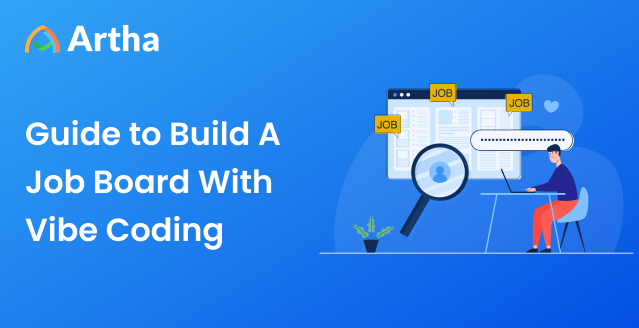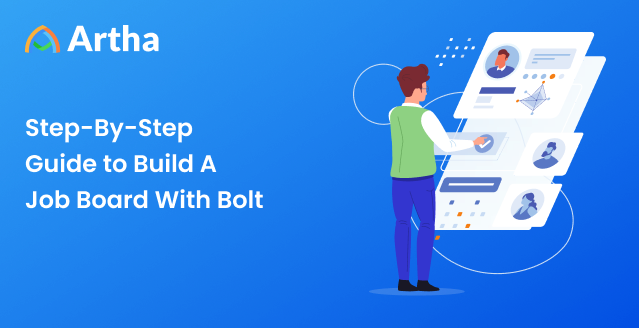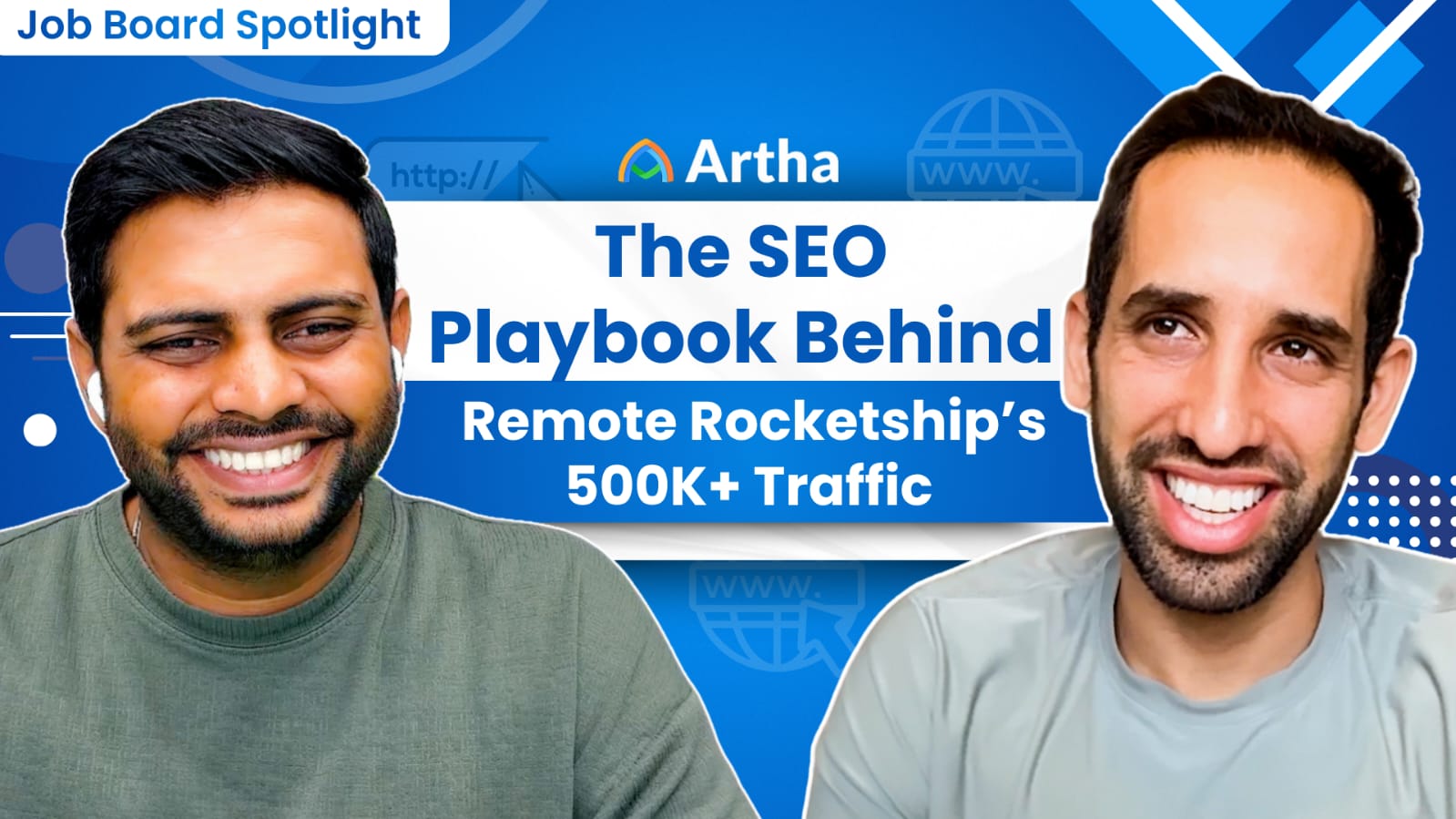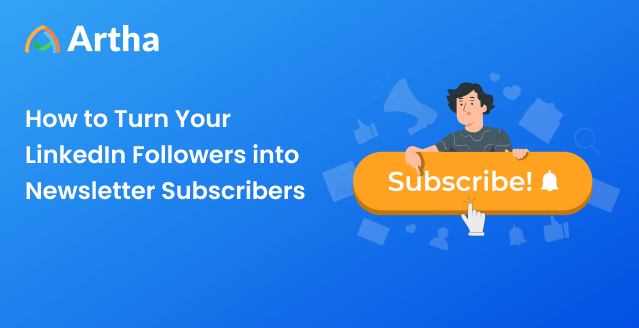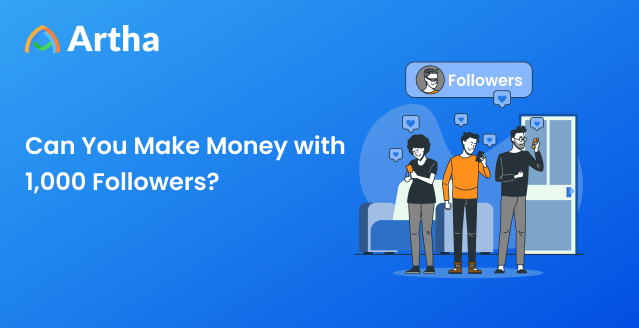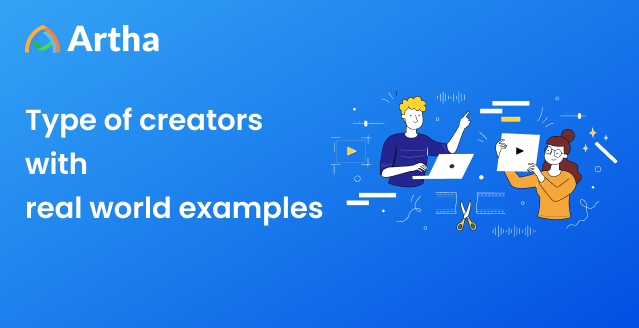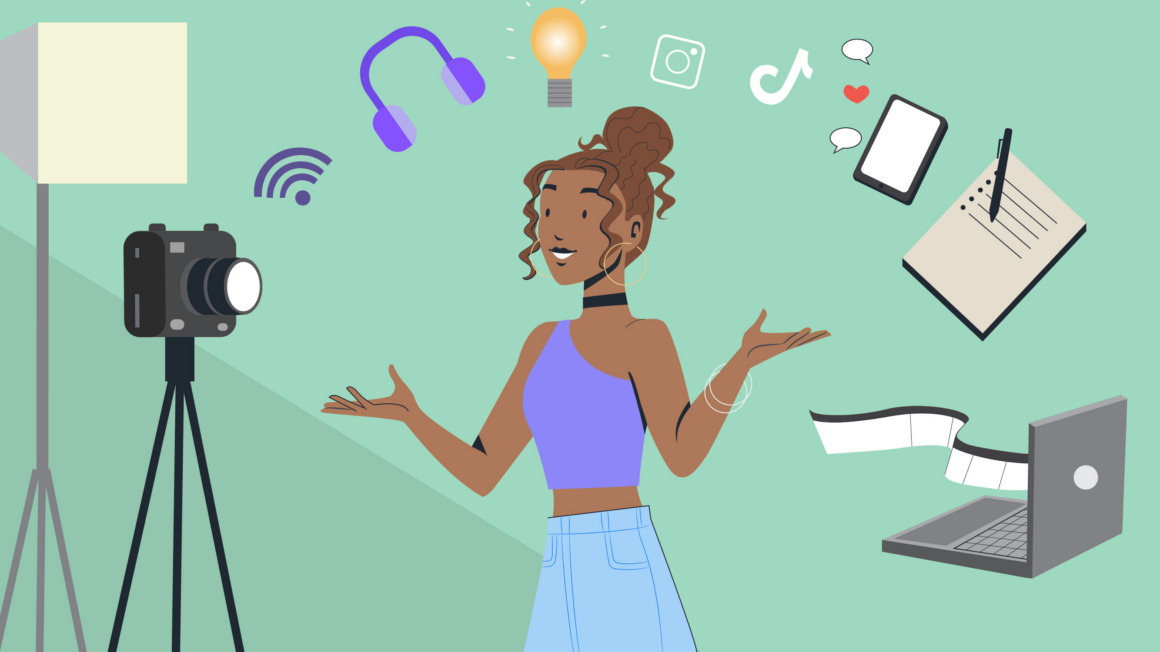 Ever wondered how someone makes $50K/month teaching people to fold fitted sheets on TikTok?
Ever wondered how someone makes $50K/month teaching people to fold fitted sheets on TikTok?
Or maybe you stumble upon a creator who quit their corporate job to review weird snacks from around the world and now has 2 million subscribers.
Welcome to 2025, where “What do you want to be when you grow up?” has gotten a serious upgrade. The creator economy isn’t just a trend – it’s a $104 billion industry that’s minting more millionaires under 30 than any generation before us. But here’s the thing – it’s not just about the mega-influencers you see on magazine covers. The real magic happens in the incredible diversity of types of content creators making a living doing what they love.
From the teacher who makes math fun to the person who builds miniature worlds out of clay, there’s literally a creator category for every interest, skill, and quirky passion you can think of. Let’s dive into this fascinating ecosystem and explore the different kinds of influencers and creator career examples that are shaping our digital world.
The Educational Content Creator: Making Learning Irresistible
Remember that one teacher who made calculus feel like a Netflix binge? Educational content creators are basically that teacher, but with ring lights and really good editing skills.
The Heavy Hitters
- Khan Academy: Started in a closet, now reaches 89M+ learners annually
- Crash Course’s John Green: Makes history feel like your favorite TV series (14M+ subscribers)
- Khan Sir: Known for his humorous and relatable teaching style, he simplifies complex subjects for millions of Hindi-speaking students in India.
- Simone Giertz: Building “useless” robots that somehow teach us profound lessons about engineering and persistence.
These creators have figured out how to break free from brand deals and build an empire of their own.
Entertainment Content Creators: The Digital Circus Masters
If educational creators are the teachers we wish we’d had, entertainment creators are the friends we all want to hang out with. They’ve mastered the art of making ordinary moments extraordinary and have built empires on their personality alone.
The Legends
- PewDiePie: Felix Kjellberg, better known as PewDiePie, turned screaming at video games into a $15 million annual income.
- Emma Chamberlain: Made drinking coffee so aesthetic that she landed partnerships with Louis Vuitton.
Here’s What’s Wild About Entertainment Creators
Their success often seems effortless, but the behind-the-scenes reality is intense. MrBeast, for instance, reportedly spends $300,000 to $3 million per video. That’s not a typo. His team studies retention graphs like day traders study stock charts, optimizing every second for maximum engagement.
Hard to believe, look at this yourself
He spent $3.5Million to recreate Squid Game in Real Life
Lifestyle and Personal Brand Influencers: Selling the Dream
Lifestyle influencers have essentially turned their lives into a product, and honestly, it’s genius. They’ve figured out how to monetize aspiration itself.
The Empire Builders:
- Chiara Ferragni: Started with a fashion blog, now runs a $20M+ fashion and lifestyle empire.
- Casey Neistat: Daily vlogs and creative storytelling led to a $25M acquisition of his company by CNN.
- Marie Forleo: From motivational content to a multimillion-dollar online education business.
- Ranveer Allahbadia (BeerBiceps): Began with fitness content, now runs Monk Entertainment, a talent management and digital marketing agency powering the Indian creator ecosystem. Look at his journey
The psychology behind lifestyle content is fascinating. According to a 2024 study by Influencer Marketing Hub, 67% of consumers follow lifestyle influencers because they want to “live vicariously” through them. We’re not just buying their recommended products; we’re buying into the lifestyle they represent.
Look at this country data
What makes lifestyle influencers particularly interesting is their platform strategy. Instagram remains their bread and butter – the visual nature of the platform is perfect for showcasing aspirational content. But smart lifestyle creators are diversifying: Pinterest for long-term discovery, YouTube for deeper storytelling, and TikTok for reaching younger audiences.
The monetization game here is sophisticated. It’s not just about posting a pretty picture with a discount code anymore. Top lifestyle influencers are launching their own brands (Kylie Cosmetics or Fenty Beauty), creating subscription-based content, and building communities around exclusive experiences. Some charge $10,000+ for a single Instagram story placement.
Niche Expert and Industry Specialists: The New Thought Leaders
Here’s where things get really interesting. Industry specialists have discovered that expertise + personality + platform = serious money and influence.
The Thought Leaders
- Gary Vaynerchuk: Wine reviews → Media empire + $200M net worth
- Dr. Mike: Makes medicine fun, 10M+ followers across platforms
- Graham Stephan: Real estate YouTube channel makes more than his actual real estate business
The Credibility Factor Is Huge Here.
According to a Q2 2024 Sprout Pulse Survey, 78% of customers believe that a brand’s social media presence has a greater influence on whether or not they trust it. That figure rises to 88% for Generation Z. These creators have built something precious: authority in an attention-deficit world.
Platform choice for niche experts is strategic.
LinkedIn is obviously huge for B2B specialists, but YouTube’s long-form content allows for deep dives that establish serious credibility. Twitter remains important for real-time commentary and thought leadership, while newer platforms like Clubhouse (remember that?) and Twitter Spaces offer live engagement opportunities.
Revenue Model
Revenue models for industry specialists are often more lucrative per follower than entertainment creators. They’re charging $5,000-$50,000 for speaking engagements, creating premium mastermind programs, offering high-ticket consulting, and licensing their expertise to corporations. Some make more from a single corporate workshop than entertainment creators make from millions of views.
Creative and Artistic Content Creators: Digital Renaissance Artists
The creative economy has exploded in ways that would make Renaissance patrons jealous. Artists who once relied on gallery representation or hoping someone would “discover” them can now build direct relationships with their audience and make a living from their craft.
The Art Stars
- Peter McKinnon: Turned photography tutorials into a multimillion-dollar brand spanning education, presets, and coffee (yes, coffee).
- Moriah Elizabeth: Built an empire around transforming thrift store finds into art, teaching millions while building her own product line.
What’s Revolutionary About This Space Is The Directness.
An artist can now go from creation to cash without middlemen. Platforms like Patreon have enabled subscription-based patronage, while Etsy, Instagram Shopping, and TikTok Shop allow direct sales. Some artists make more from selling digital prints and tutorials than from their original artwork.
Fitness Influencers: Turning Gains into Gold
Fitness creators aren’t just flexing—they’re building empires rooted in transformation, discipline, and trust. Whether it’s bodyweight workouts at home or advanced nutrition strategies, these creators are leading a movement (literally and figuratively).
The Fitpreneurs
- Chloe Ting: Her free YouTube workout challenges exploded during the pandemic, turning her into a household name for home fitness. She now runs her own app and product line.
- Gaurav Taneja (Flying Beast): A licensed nutritionist, professional bodybuilder, and commercial pilot—he combines family vlogs with serious fitness content. His credibility comes from walking the talk.
- Cassey Ho The creator of Blogilates, she transformed pilates into a global online movement with over 6M subscribers and her own activewear brand sold in major retail stores.
How They Monetize
- Digital workout programs and mobile apps
- Brand deals with fitness apparel and supplement companies
- YouTube ad revenue and affiliate links
- Launching personal fitness products or gyms
The common thread? Consistency, community, and credibility and using the creator monetization tools very smartly. These creators aren’t just building muscle—they’re building loyal followings and scalable businesses.
Finance Creators: Making Money Make Sense
Finance creators are the new-age money mentors. They simplify complex topics like investing, taxes, budgeting, and financial freedom—making them accessible to anyone with a smartphone and curiosity.
The Money Mentors
- Graham Stephan: A former real estate agent, Graham now teaches personal finance and investing to a YouTube audience of 4M+.
- CA Rachana Ranade: A chartered accountant who’s turned stock market education into a thriving business. Her Hindi and English tutorials make financial literacy accessible to Indian millennials and Gen Z.
- Pranjal Kamra: A SEBI-registered financial advisor who built his brand on long-term value investing and sound money principles.
Why it works
Finance creators are trust-first brands—people don’t just follow, they listen. They monetize through paid courses, workshops, fintech partnerships, books, and high-retention content on YouTube and LinkedIn.
Micro-Influencers and Community Builders: Small Audiences, Big Impact
Here’s a secret the marketing world has figured out: sometimes smaller is better. Micro-influencers (typically 10K-100K followers) often have engagement rates that make mega-influencers jealous.
The local food blogger who gets 500 likes per post but has restaurants fighting to get featured (chandrika.dixit or known as Pav Bhaji Girl in India). Or the parenting account with 25K followers whose product recommendations sell out within hours. These creators have built something precious: genuine community and trust.
The numbers support this trend. A report says that nano influencers regularly attain high engagement rates of 7-10%, but larger influencers’ engagement rates fall below 2-3%.. Their audiences are more engaged, more loyal, and more likely to take action on recommendations.
Read more here: Why Nano Influencers In India Are Better Than Mega Influencers [2024 Data]
What’s beautiful about this category is the relationship-driven monetization. These creators often work directly with brands on authentic partnerships rather than going through agencies. They’re building membership communities, offering personalized coaching, and creating products specifically for their tight-knit audiences.
Emerging Creator Categories in 2025: The Next Wave
The creator economy never stops evolving. Here are the emerging categories that are just getting started:
AI-assisted Creators
They are using tools like ChatGPT, Midjourney, and video AI to create content faster and more efficiently. Some are building entire channels around AI tutorials, while others are using AI as a creative partner.
Virtual Influencers
Like Lil Miquela and Shudu are blending technology with creativity. While still niche, some virtual influencers are landing major brand deals and building substantial followings.
Sustainability And Cause-Driven Creators
They are building audiences around environmental consciousness, social justice, and ethical consumption. Gen Z audiences particularly connect with creators who align with their values.
Mental Health And Wellness Advocates
Filling a crucial gap, offering support, education, and community around mental health topics. The destigmatization of mental health conversations has created space for creators who approach these topics thoughtfully.
Remote Work And Digital Nomad Influencers
Capitalizing on the work-from-anywhere trend, teaching others how to build location-independent careers and lifestyles.
Creator-entrepreneurs- The Job Board Owners
They are now looking beyond brand deals and subscriptions. One powerful emerging model? Job boards. Creators with trusted audiences—whether in tech, design, writing, or any niche—are launching branded job boards to connect their communities with real opportunities. Tools like Artha make this simple by letting creators set up curated, AI-powered job boards that earn them passive income every time someone applies. It’s a smart way to monetize trust—without posting 24/7 or compromising content.
The Bottom Line
The creator economy isn’t slowing down – it’s accelerating. Every massive creator started with their first awkward video, their first post with zero likes, their first attempt at talking to a camera. The difference between them and everyone else? They kept going.
The question isn’t whether the creator economy is real (it is). The question is: What type of creator will you be?
The Reality Check: Behind the Highlight Reel
But wait – let’s keep it 100% real for a minute.
While we’re celebrating the success stories, there’s another side to the creator economy that doesn’t make it to the highlight reels. For every MrBeast making millions, there are thousands of creators struggling to pay their rent.
The Uncomfortable Truth
- 96% of creators make less than $1,000 per month from their content. Let that sink in.
- While some creators have become legitimate brands and businesses, the vast majority are:
- Working 60+ hour weeks for inconsistent pay
- Dealing with algorithm changes that can tank their income overnight
- Struggling with mental health from constant comparison and pressure
- Taking on debt to fund content creation equipment and travel
- Working multiple jobs to support their “passion project”
The Hidden Struggles
- Burnout is Real: Creating content 24/7, responding to comments, staying “on brand” constantly – it’s exhausting. Many creators report feeling like they can never truly “clock out.”
- Income Volatility: One month you make $5K, the next month $500. Try explaining that income to a landlord or bank.
- The Comparison Trap: Seeing other creators’ success while you’re eating ramen for the third night in a row hits different.
- Platform Dependency: When TikTok got banned in certain regions or Instagram changed its algorithm, creators saw their income disappear overnight.
| Creator Type / Platform | Description | Example(s) | Key Monetization | Primary Platforms |
|---|---|---|---|---|
| Educational Content Creator | Makes learning engaging, accessible, and fun through educational content (videos, courses, explainers). | Khan Academy, Crash Course (John Green), Khan Sir, Simone Giertz | Ads, direct courses, memberships, donations, branded partnerships | YouTube, Personal Sites |
| Entertainment Content Creator | Entertains audiences through humor, storytelling, vlogs, gaming, or challenges. | PewDiePie, Emma Chamberlain, MrBeast | Ads, sponsorships, creator merchandise | YouTube, TikTok, Instagram |
| Lifestyle & Personal Brand Influencer | Inspires through sharing daily life, style, routines, or aspiration; often ‘selling the dream.’ | Chiara Ferragni, Casey Neistat, Marie Forleo, Ranveer Allahbadia (BeerBiceps) | Branded content, owned products/brands, affiliate, subscriptions, paid placements | Instagram, YouTube, Pinterest, TikTok |
| Niche Expert / Industry Specialist | Shares expert knowledge in a specific discipline, building authority and thought leadership. | Gary Vaynerchuk, Dr. Mike, Graham Stephan | Consulting, courses, paid speaking, brand licensing, workshops, B2B deals | YouTube, LinkedIn, Personal Sites, Twitter |
| Creative & Artistic Creator | Creates and sells visual or artistic work (art, DIY, crafts), teaches methods. | Peter McKinnon, Moriah Elizabeth | Print/digital sales, merchandise, courses, patronage/subscriptions | YouTube, Patreon, Instagram, Etsy |
| Fitness Influencer | Produces fitness content (workouts, routines, transformation stories), inspires health and wellness. | Chloe Ting, Gaurav Taneja (Flying Beast), Cassey Ho (Blogilates) | Apps, digital fitness programs, sponsorships, merchandise | YouTube, Instagram, Apps |
| Finance Creator | Makes personal finance, investing, and money management accessible and actionable. | Graham Stephan, CA Rachana Ranade, Pranjal Kamra | Courses, workshops, ads, affiliate, books, sponsored financial products | YouTube, LinkedIn |
| Micro-Influencers & Community Builders | Niche-focused creators with highly engaged, small to mid-size audiences; drive strong community action. | Chandrika Dixit (Pav Bhaji Girl), local/parenting/food micro-influencers | Memberships, direct brand deals, coaching, product drops | Instagram, Facebook Groups, WhatsApp, LinkedIn |
| Emerging Creator Categories | AI-assisted creators, virtual influencers, cause-driven (sustainability), mental health advocates, remote work/digital nomad guides, creator-entrepreneurs (job board owners). | Lil Miquela, Shudu, sustainability and wellness advocates, job board creators | Brand deals, platform subscriptions, job board revenue (passive), exclusive content | YouTube, Instagram, TikTok, LinkedIn, Job Board Platforms |
Conclusion
The creator economy is both the best and worst thing to happen to creative careers. There are many types of creators; on one hand, it’s opened doors for millions to turn their passions into livelihoods. On the other, it’s fueled unrealistic expectations and led to real financial pressure behind the scenes.
Before you quit your day job, consider this:
- Build a financial cushion (aim for at least 6 months of living expenses).
- Start creating as a side hustle—use that time to test, learn, and grow.
- Know that real traction takes years, not weeks.
- Have a solid backup plan (seriously).
- Focus on providing value to an audience, not just chasing fame.
Look into income streams that can support your goals—like platforms that help you earn passively from your niche, even when you’re not posting daily.
Sustainable creative careers are built on a mix of passion, patience, and smart planning—not just viral moments.





